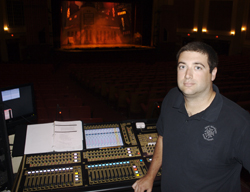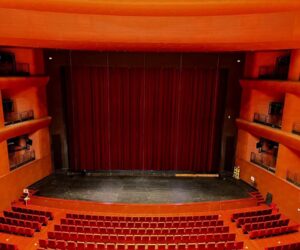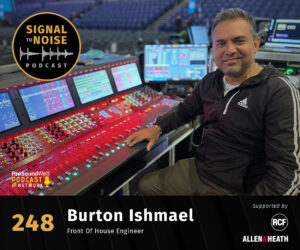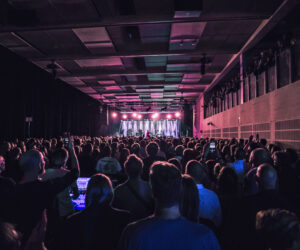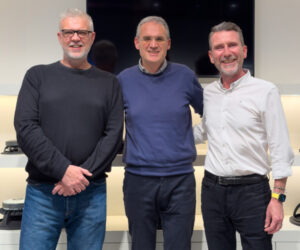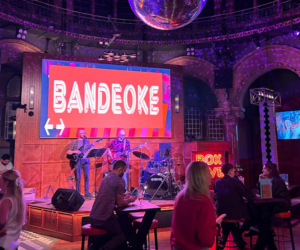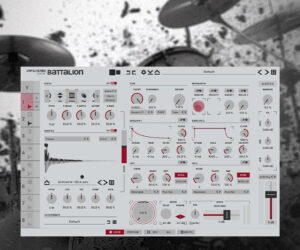The New Bedford (Massachusetts) Festival Theatre recently staged a two-week run of the musical “The Producers” at the Zeiterion Performing Arts Center, featuring original costumes and sets from the Broadway performance.
Jason Choquette, on vacation from his main gig as touring sound engineer for the “Phantom of the Opera”, designed the production’s sound system with a DiGiCo SD8 at its core following a chance meeting with DiGiCo U.S. Sales Manager Matt Larson.
Choquette met Larson during the Minneapolis ‘Phantom’ run in June, and was telling him about designing the audio system for an upcoming production of “The Producers” at the Massachusetts theatre where he’d gotten his start. “The next thing I knew,” Choquette laughed, “I was going to a demo at a local sound shop to check out the SD8 console! Matt wanted some feedback for a new theatre software revision, but the only way I’d be able to do that was to use it in a real application like a show. I gave him the dates of ‘The Producers’, and within a few weeks, I had a demo console for feedback.”
As was typical in theatre productions, Choquette had previously mixed on analog Cadac J-Type consoles on productions including “Phantom,” as well as “Annie” and “Les Miserables.” But more recently, he’d been noticing more digital desks—in particular DiGiCo D5T—popping up on tours and in theatres such as the one used on the Tony-awarded “Billy Elliot”.
“I actually worked on a D5T once,” he recalled, “but since I was only the mixer, everything was already done for me. I just came in and threw faders. In this situation for “Producers,” I was able to actually dig in and program the console from the beginning. My first impression was that it looked like a typical digital console, but once I started working with it, learning all of its bells and whistles, it worked—and sounded—like an analog console.”
It took Choquette a little over two weeks to select mics and configure the console, which included a total of 68 inputs—32 instrument clip-on mics in the pit for the 13-piece orchestra, and 22 for vocal mics for the cast. Due to the space constraints in the theatre, he put a DiGiCo 48-input rack in the pit, with digital snakes leading back to the console.
“Once I got the full orchestra in for the initial soundcheck, I had the console up and running in 15 minutes,” he said. “We then threw in the cast for a complete run-through and I had the console pretty much dialed in after the second group song—with a couple tweaks here and there to compensate for the actors who put on hats during the course of the show.
:Having a digital desk for this kind of thing was invaluable. I was able to store EQs for those actors in those scenes, so when the lead character puts on a hat, you can have that EQ stored on that channel to compensate. The versatility of being able to program your EQs and dynamics, scene to scene, was amazing.”
He found the built-in effects to be amazing, as well. “I used three onboard ‘channels’ of reverbs, two for vocals and one for the band. The band reverb doesn’t change at all; the vocals do depending on the scene you’re in. You don’t usually find that clean of an effect built-in on a digital desk. The speed of the console with the processor is amazing! There’s like no load time whatsoever.
“The compressor and the gates on the console, which every channel has, are amazing. I didn’t use any of the inserts or the graphic EQs; I felt that the parametric EQs on each channel were enough. And the ability to edit the parameters on the effects, and the depth you can actually go into it, was incredible.”
Even though he was using the console in a relatively basic configuration, Choquette was blown away by all that it had to offer. “The basic power of the console is amazing, and you don’t have to go that far in-depth to do what you needed to do. I was using the console pretty much in its basic configuration, but as each week progressed, I added some more reverbs and such in, and started playing around with that. I also noticed that the processors were very clean. A lot of times on digital consoles you’ll hear a little ‘hiss’ and there is nothing like that on the SD8.”
Taking advantage of the DiGiCo MADI format, and using an RME MADIface interface, he was able to multitrack the show for archival purposes, but also found those recordings useful for fine-tuning his mixes. “With the flip of a button, you have the recording in front of you on the same channels that they were rerecorded on. I was able to fine-tune some of the show at that point, having all those tracks in front of me.”
Looking ahead, Choquette says he would definitely use DiGiCo again on a theatrical performance given the opportunity, although he thinks the SD7 would accommodate a typical, Broadway-type of production. And he very well might get the chance to switch over as he moves into the position of Head Of Audio for Phantom’s touring division.


